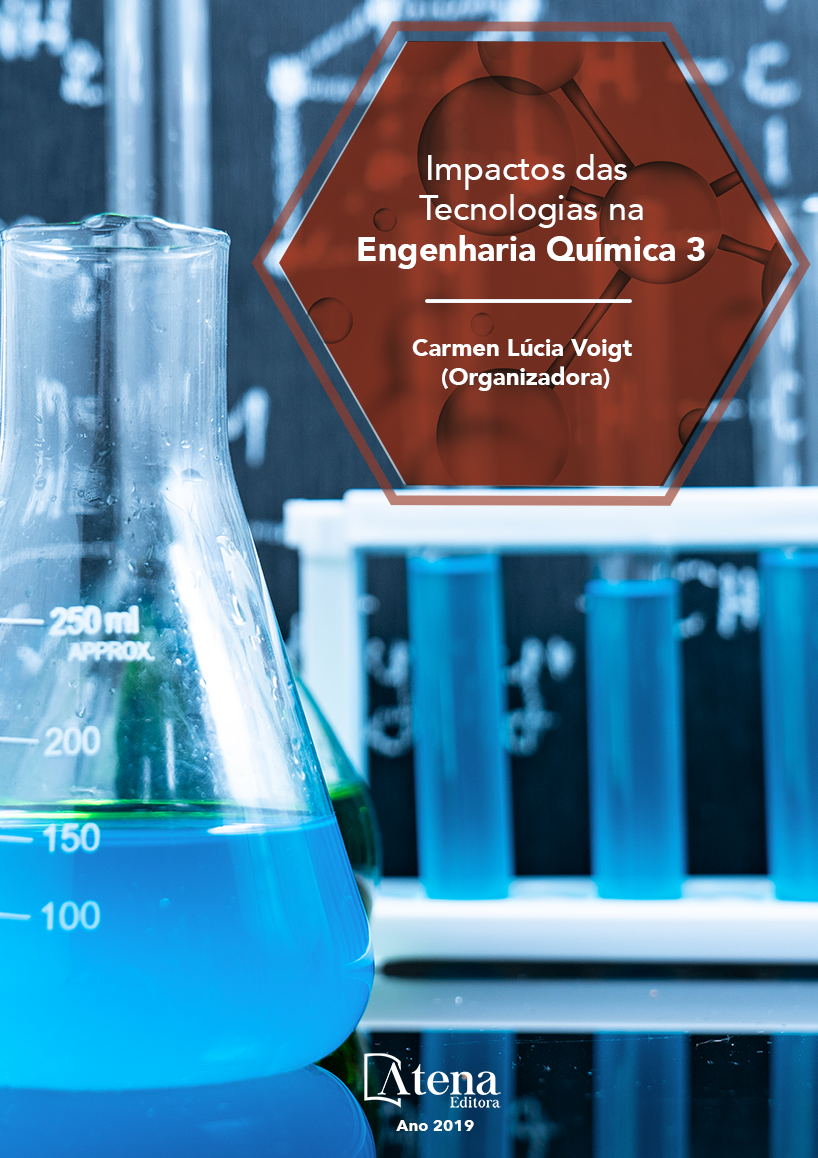
INFLUÊNCIA DO TRATAMENTO QUÍMICO NA FIBRA DE COCO PARA UTILIZAÇÃO EM COMPÓSITO POLIMÉRICO
O presente trabalho, teve como
objetivo a otimização do processo de
mercerização das fibras de coco para posterior
aplicação em compositos poliméricos. As fibras
de coco foram extraídas de vegetação da
cidade de Marabá (PA) e dividas em 2 porções.
Uma deixada no seu estado in natura e a outra
foi dividida e submetidas a tratamento químico
com NaOH nas proporções de 0,5%, 1%, 5%
e 10%. Logo após, as fibras foram cortadas
manualmente nos comprimentos de 15 mm
e merceiradas em condições ambientais. As
fibras de coco foram submetidas à análise
termogravimétrica e avaliação microestrutural,
por microscopia eletrônica de varredura (MEV).
Pode-se inferir, neste estudo, que a melhor
concentração para o tratamento químico das
fibras de coco, foi a de 1%, pois proporcionou
uma boa retirada dos compostos como
ceras, lignina e hemicelulose sem permitir a
degradação das fibras de celulose.
INFLUÊNCIA DO TRATAMENTO QUÍMICO NA FIBRA DE COCO PARA UTILIZAÇÃO EM COMPÓSITO POLIMÉRICO
-
DOI: 10.22533/at.ed.3191901048
-
Palavras-chave: Materiais Compósitos. Fibras Vegetais. Propriedades.
-
Keywords: Composite Materials. Plant Fibers. Properties
-
Abstract:
The present work had the objective
of optimizing the mercerization process of the
coconut fibers for later application in polymer
composites. The coconut fibers were extracted
from vegetation of the city of Marabá (PA)
and divided into 2 portions. One was left in
its in natura state and the other was split and
subjected to chemical treatment with NaOH in
the proportions of 0.5%, 1%, 5% and 10%. Soon
after, the fibers were cut manually at 15 mm
lengths and marketed under ambient conditions.
The coconut fibers were submitted to thermogravimetric analysis and microstructural
evaluation by scanning electron microscopy (SEM). It can be inferred in this study
that the best concentration for the chemical treatment of coconut fibers was 1%, as it
provided a good removal of the compounds such as waxes, lignin and hemicellulose
without allowing degradation of the cellulose fibers.
-
Número de páginas: 15
- Gilmar Alves Borges
- Lauro Henrique Hamoy Guerreiro
- Dilson Nazareno Pereira Cardoso
- Douglas Alberto Rocha de Castro
- Emerson Cardoso Rodrigues
- Wenderson Gomes dos Santos


